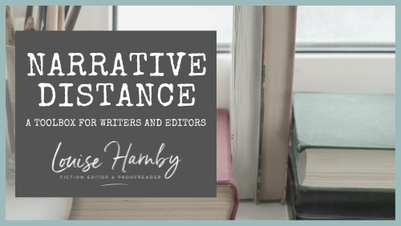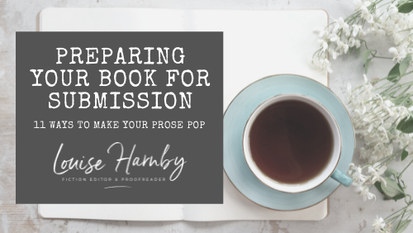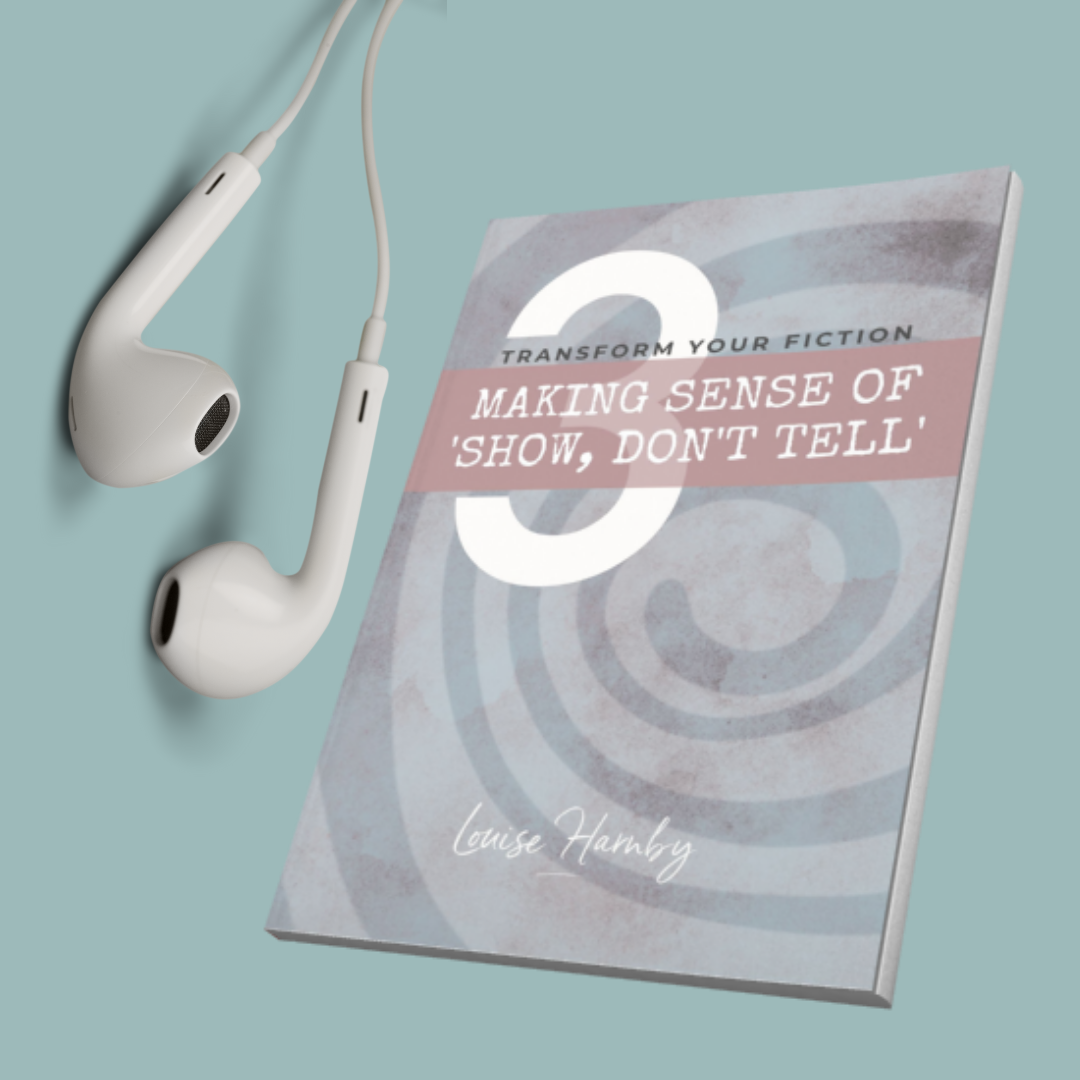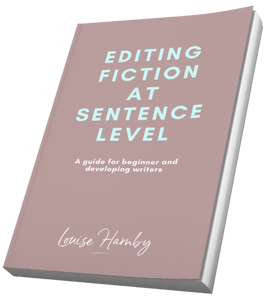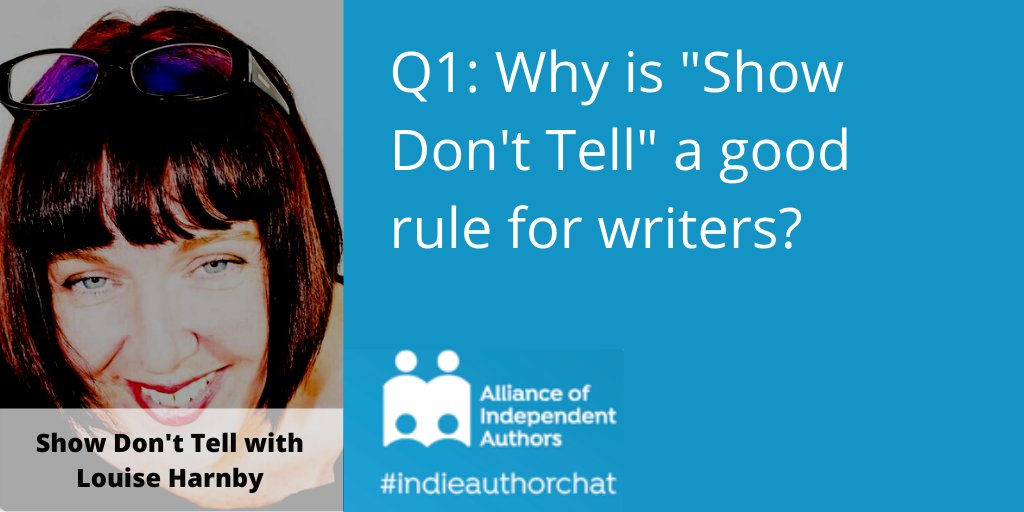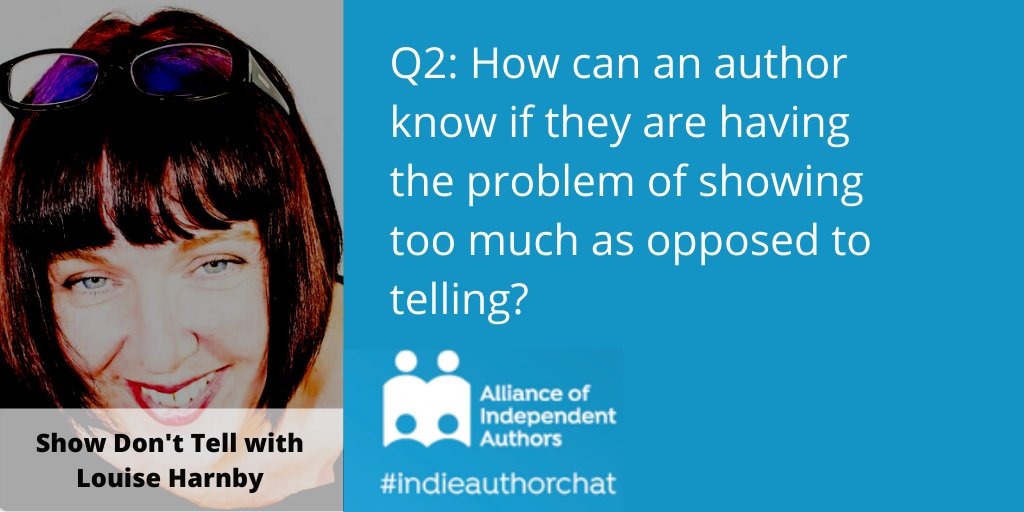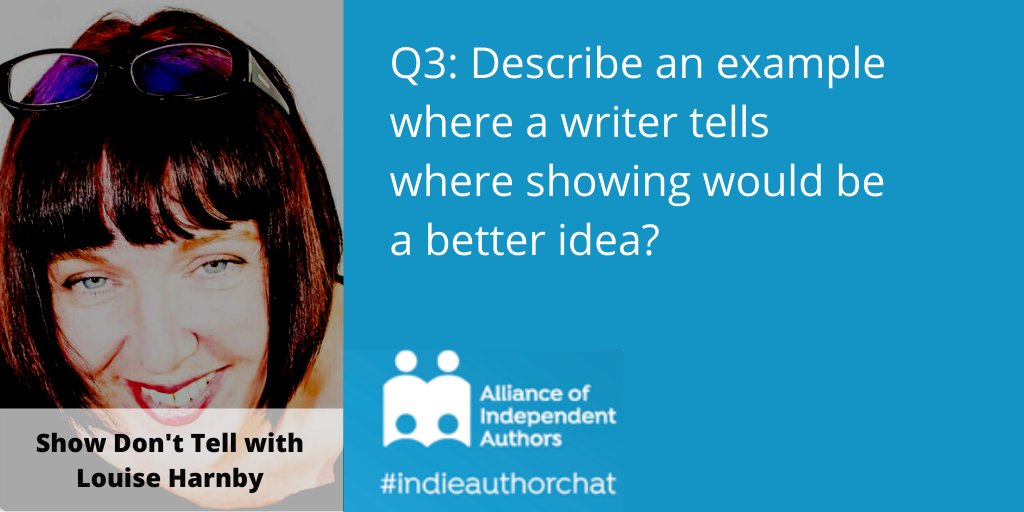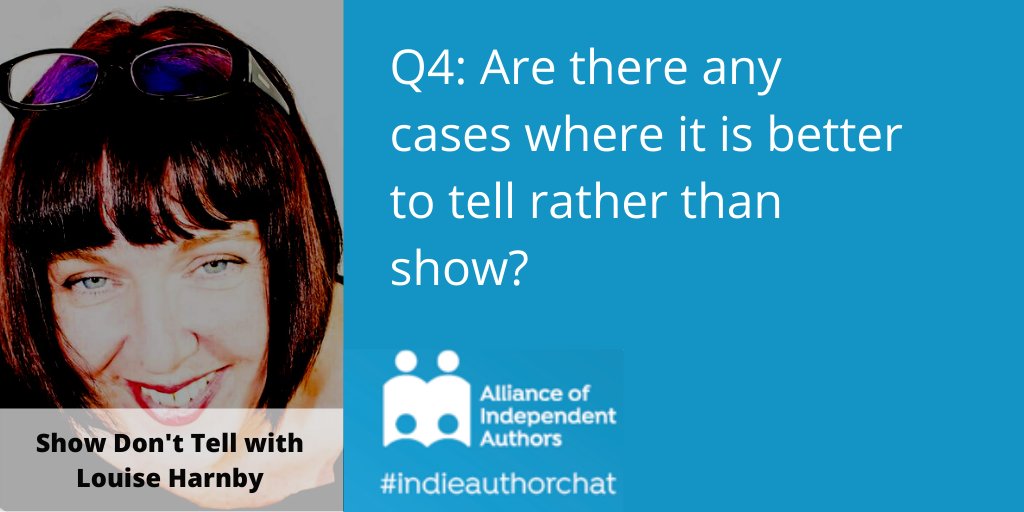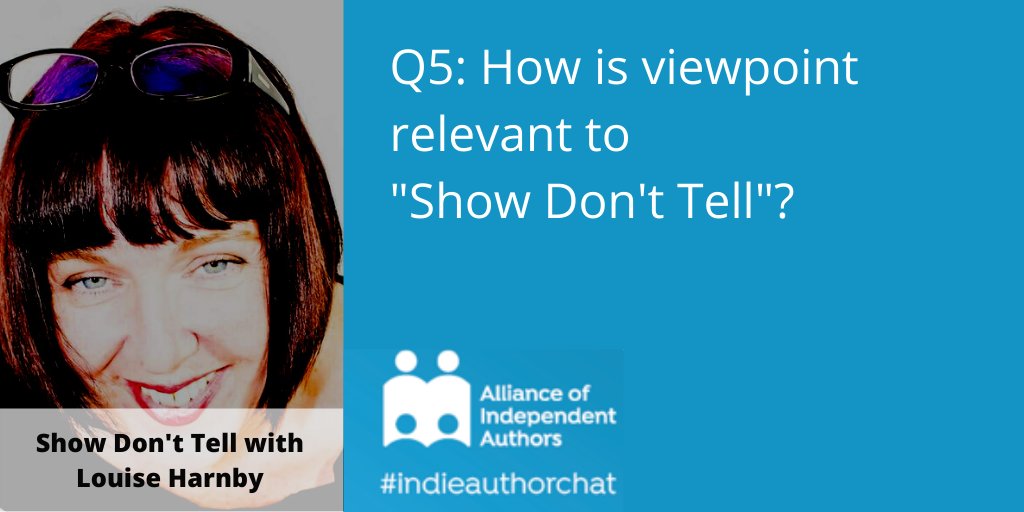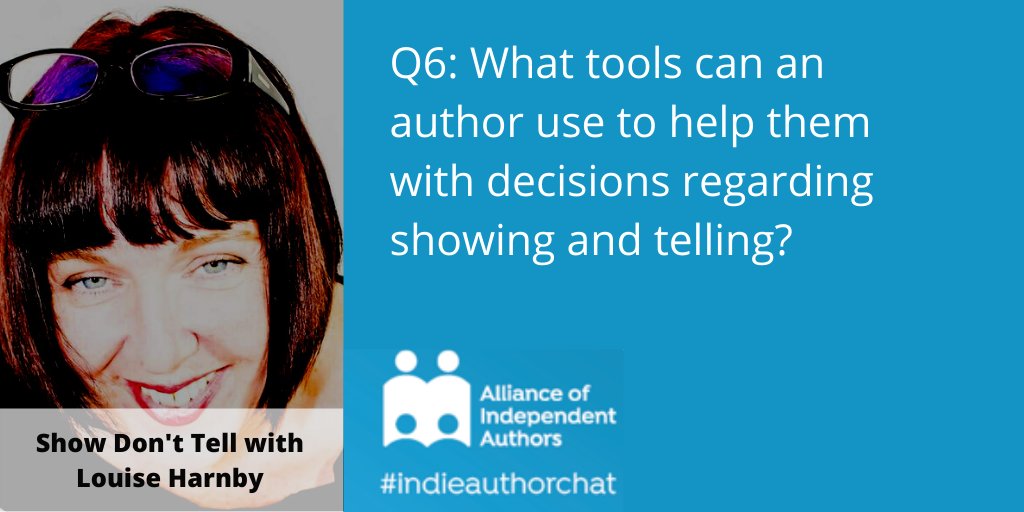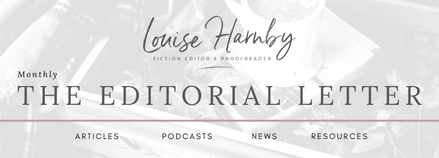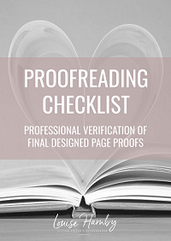Learn about ‘show, don’t tell’ in fiction
Hone your writing and editing craft with articles, books and a Twitter chat dedicated to helping you understand showing, telling and narrative distance.
Scroll down the page or click on an icon to go straight to a section.
Want to learn about a different topic? Select the green icon to return to the main library page.
Scroll down the page or click on an icon to go straight to a section.
Want to learn about a different topic? Select the green icon to return to the main library page.
Articles about showing and telling in fiction
Scroll down to see what's available in this section.
Andy Maslen, bestselling crime author
/
- 1
- 2
- 3
- 4
- 5
BY FAR THE BEST LITERARY EDITOR I'VE HAD
You are by far the best literary editor I've had. Your interventions are right on target, not to mention that I've learned a lot from your comments. Thank you.
You are by far the best literary editor I've had. Your interventions are right on target, not to mention that I've learned a lot from your comments. Thank you.
NINA FITZPATRICK, NOVELIST, DRAMATIST & SCREENWRITER
/
- 1
- 2
- 3
- 4
- 5
Books about ‘show, don’t tell’ for authors and editors
Making Sense of ‘Show, Don’t Tell’Learn when to show and when to tell, and why both have a place in fiction. Visit the book's page to find out more about what's included. Or listen to an audio taster of the first chapter right here!
|
Hone your novel line craft
Want to do your own line editing? This 74K-word book shows you how.
Twitter chat with ALLi on ‘show, don’t tell’
In March 2021, I was invited by ALLi (the Alliance of Independent Authors) to be the guest on its weekly #IndieAuthorChat. The subject was ‘show, don’t tell’. Tim Lewis asked me 6 questions. Here are my answers.
|
Q1: Why is "Show Don't Tell" a good rule for writers?
|
A1.1: I prefer to see it as a useful guide rather than a rule! Def a place for both. Show = character experience related through action and sensory info. Tell = exposition; explaining. Show = nudges that allow the reader to do the work. Tell = on a plate!
A1.2: Too much telling can be flat, mundane. Showing can be more evocative and interesting – grounds experience in broader landscape. Eg ➡️ “The foxgloves’ long stems bend almost flat in the wind” shows the strength of the wind. “The wind is strong” tells it. |
|
Q2: How can an author know if they are having the problem of showing too much as opposed to telling?
|
A2.1: Check whether shown prose does the following:
👉 interrupts action 👉 stops a reader getting to what they’re really interested in 👉 focuses the reader’s gaze on stuff that doesn’t drive story forward. A2.2: Effective showing should be ⭐relevant⭐, and help readers imagine what’s hard to articulate with telling. But if it can be told well, tell it! Showing should nudge a reader’s imagination, not overwhelm their senses. A2.3: Eg ➡️ “Two hours to kill before the debrief. She buys a sandwich and chews on stale bread and limp lettuce. The gravelly crust assaults her tongue and …” 🤢 I’ll stop! Unless the quality of lunch is key to the plot, showing is unnecessary and distracting. Ditch it. |
|
Q3: Describe an example where a writer tells where showing would be a better idea.
|
A3.1: Rather than focusing the reader’s gaze inwards by telling *how* a POV char accesses info (eg saw, noticed, knew), consider recasting without the FILTER WORD so that readers focus outwards and are shown the *what*.
A3.2: Eg ➡️ “She saw an armed man leaping down the stairs two at a time.” > “An armed man leapt down the stairs two at a time.” The latter is more immediate but still immersive. A3.3: Rather than telling of character INTENTION, showing character action could be more effective. Eg ➡️ “Ayesha reached up *to* switch on the light.” > “Ayesha reached up *and* switched on the light.” A3.4: Descriptions that read like told SHOPPING LISTS can be boring. Instead, show by weaving into action/experience. Eg ➡️ (To Kill a Mockingbird) “Men’s stiff collars wilted by nine in the morning.” (not: “The men wore stiff collars.”) |
|
Q4: Are there any cases where it is better to tell rather than show?
|
A4.1: CONSIDER SCENE: Eg ➡️ Faster-paced scenes where anything but an explanation would be interruptive. Writers and editors need to ask: Where should the focus be: internal and emotional, or external and explanatory?
A4.2: CONSIDER TIME: If there’s a scene shift and two hours have passed, or you want to tell the reader what time it is, go for it. Eg ➡️ “At one in the morning the call came in.” “Two days passed and he heard nothing.” No need to labour the point. A4.3: CONSIDER VOICE: An overload of sensory information might mar the narrator’s voice and seem contrived and overly self-aware. ➡️ There’s nothing wrong with “I felt like puking” if that’s how a character would most likely convey that info. A4.4: TELLING CAN SHOW! Removing it could obliterate hidden magic. Eg ➡️ American Psycho has reams of told prose that exposes the POV character’s obsession with material goods and with himself. The exposition is a back door to his narcissism. |
|
Q5: How is viewpoint relevant to "Show Don't Tell"?
|
A5.1: With 1P and 3P-limited POVs 👁️, readers can’t access non-POV characters’ internal experiences. Showing is the back door to their emotional states – audible and visual clues that enable the POV character and reader to surmise their interior experience.
A5.2: Here’s an example from Harlan Coben’s WIN (p. 173): ➡️ “She starts fiddling with the ring on her hand.” The “she” is *not* the POV character so Coben shows us her discomfort – that she’s hiding something – rather than telling us. It's a 1P narrative but we get to access the non-POV character's emotions anyway. |
|
Q6: What tools can an author use to help them with decisions regarding showing and telling?
|
A6.1: ⚙️ RHYTHMIC TOOLS such as anaphora, sentence fragments, asyndeton, polysyndeton help authors convey mood and emotion. Eg ➡️ The omission of commas in polysyndeton might convey drudgery or dizziness. Fragments might convey high alert, tension, despair, fear.
A6.2: ⚙️ PUNCTUATION AND FORMATTING TOOLS can show, eg ➡️ exclamation, volume, pauses, interruptions and emphasis so that the author needn’t also tell of exclaiming, the loudness of speech, hesitation etc. A6.3: ⚙️ LAYOUT can help too. Eg ➡️ One-line paragraphs can do heavy-lifting when it comes to showing the order of action and its immediacy rather than telling *then* X happened, *then* Y happened. There’s an embedded wallop to a one-liner! A6.4: ⚙️ STRONG VERBS can be quick fixes. Eg ➡️ “The rumble of traffic” shows the sound. “The sound of traffic” tells it. “Haring” shows the speed of running. “Running fast” tells it. |
Get my best advice straight into your inbox
|
The Editorial Letter comes out once a month. Get my best advice on fiction editing and editorial business building.
|
|
|
|
|
© 2011–2024 Louise Harnby

